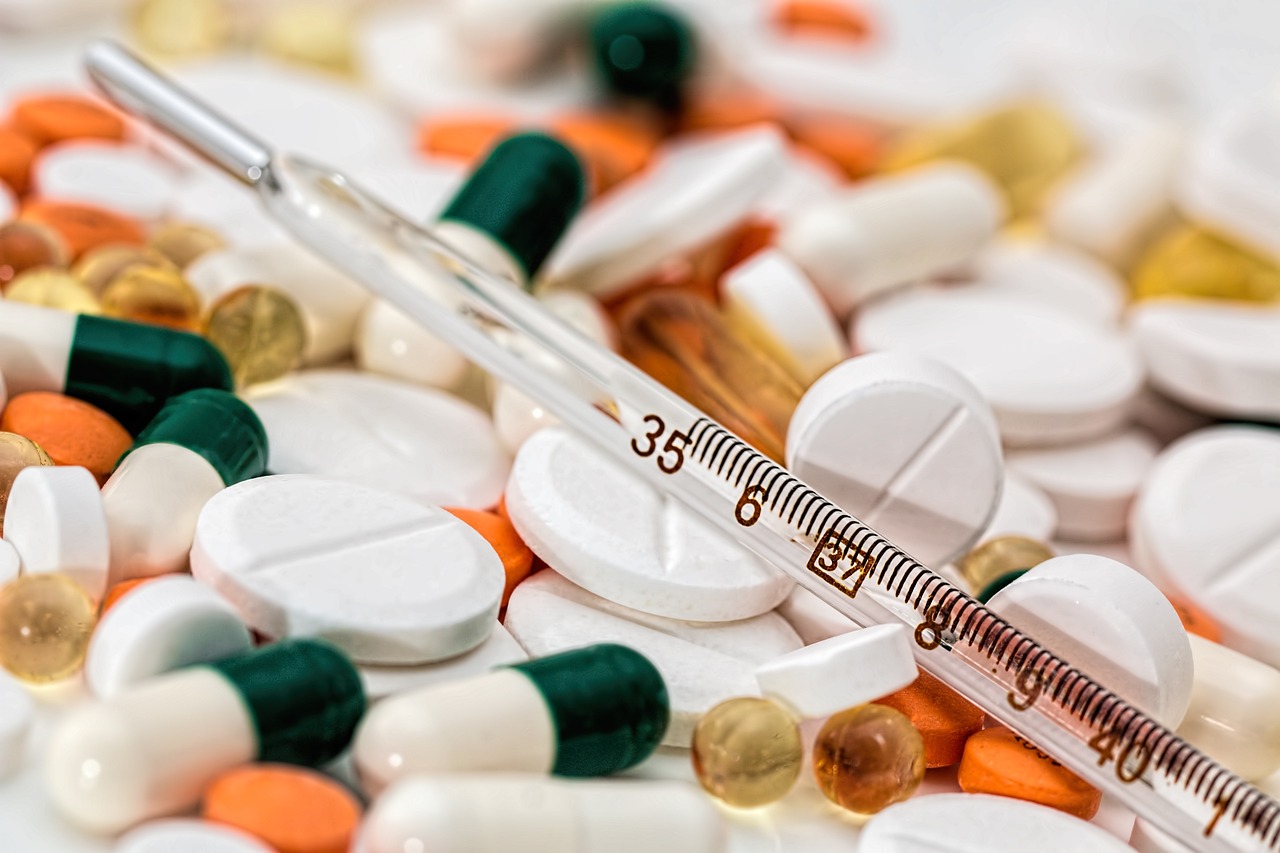Heroin is a powerful psychoactive drug from the opioid drug class, and it is estimated over recent years by the World Health Organisation that there are 12-15 million heroin users worldwide.
Heroin is an addictive substance that can wreak havoc on a person’s health leading to several medical complications, it is also a chronic condition with a high risk of relapse for its users.
One reason why heroin is such a difficult drug to give up and has a high relapse rate is because of the severe physical symptoms and intense cravings that people taking the drug experience when they attempt to stop taking the drug. (15)
Heroin addiction now falls under the diagnostic category of Opioid Use Disorder according to DSM5 which sets the criteria that medical professionals use to help them assess and diagnose addictive disorders. (1)

The following 11 criteria are used by clinicians to reach a diagnosis of OUD or heroin addiction;
Clinicians tend to reach a diagnosis of a mild OUD if a patient meets 2/3 of the 11 criteria over a 12-month period, a moderate OUD, if they meet 4/5 of the criteria and a severe OUD if they match over 6 of the 11 criteria. (1)
Detox is one part of the treatment process for people diagnosed with opioid use disorder who have developed a physical dependence on heroin to the point where it is causing them significant physical and psychological distress which has drastically reduced the quality of their lives.
This is no small part due to the symptoms of withdrawal that substance users experience when they stop taking the drug and can only be alleviated by consuming more heroin, which only strengthens the addictive cycle. (8)
Heroin users will need to go through detox treatment when a medical professional has diagnosed them with heroin addiction (opioid use disorder) because they meet the DSM5 criteria for the condition.
This can be seen by the fact that they have developed a dependency on heroin due to their increased tolerance to heroin and, also because they begin to suffer unpleasant withdrawal symptoms when they go for a short period without taking heroin.
Heroin is a fast-acting drug with a short half-life so withdrawal symptoms may appear after only 6 hours of last consuming the drug. (8,12)

The mild symptoms individuals with a mild heroin addiction may experience when withdrawing from heroin include;
A substance user diagnosed with a moderate heroin addiction may experience;
Substance users who have been taking heroin heavily for a long time and have been assessed as having a severe addiction (opioid use disorder) may experience the following severe withdrawal symptoms;
(5,14)
Several factors determine how long heroin withdrawal lasts, the main one is the pattern and volume of heroin use exhibited by the user.
Heroin is a powerful and highly addictive drug and contains chemicals that can attach to opioid receptors in the brain and have a strong psychoactive effect on the body and the brain’s biology.
The more often a person consumes heroin the shorter the period in which they will experience withdrawal symptoms. Regular users of heroin may experience withdrawal symptoms only 6-8 hours after their last dose meaning they may need to take heroin several times a day to keep withdrawal symptoms away.
Other factors affecting the length of withdrawal include the strength and type of the individual doses that patients consume, the age and gender of the patient and the physiological and psychological characteristics of each patient as seen in their medical and psychiatric history. (9,15)
6-12 hours after the last dose of heroin
One or two withdrawal symptoms may begin to appear in this time frame, although it is likely they will be quite mild.
12-24 hours
Symptoms such as muscle aches, feelings of nausea and stomach cramps appear and become more uncomfortable as the 24-hour mark approaches.
2-3 days (24-72 hours after the last dose)
The withdrawal symptoms become much stronger and very uncomfortable to deal with, this is when anxiety and panic attacks are likely to develop as well as shaking, and muscle pain will get worse from the 48-hour mark onwards.
3-7 days after the last dose
From days 3-5, the symptoms are likely to be at their most intense and may include profuse sweating, stomach cramping and vomiting. From the 5th day onwards after the patient last consumed heroin the symptoms will start to subside and slowly begin to disappear from day 7.
However, it must be added that psychological consequences such as anxiety, strong cravings and feelings of depression may last for weeks afterwards and in some cases months and this is why heroin is a drug with high relapse risk. (5,14)

When assessing the optimum location for a client’s heroin rehab treatment to take place medical professionals will consider the severity of a client’s heroin addiction and the nature of their living arrangements.
A patient with severe heroin addiction with potential health complications and a history of relapsing may be better suited to receiving detox in a specialist residential setting where they can be cared for and monitored around the clock.
Also, any patients with unstable and chaotic living arrangements may be strongly advised to undergo an inpatient treatment programme as emotional support and a stable environment are essential to help patients get through this challenging treatment.
Otherwise, there is the option of receiving heroin detox as an outpatient in community settings where patients can receive their pharmacological treatment and live at home, ideally surrounded by supportive family members.
The time required to complete heroin detox does differ from patient to patient and very much depends on how severe their heroin addiction is.
On average the detox treatment can take 7-21 days, but for patients who have consumed high levels of heroin for several years, it may take even longer to bring down the heroin levels in their body as their high blood levels could still lead to continuing withdrawal symptoms.

In order to carry out heroin detox clinicians use substitute medications because they are chemically similar to heroin but are not as physically addictive, nor do they trigger feelings of euphoria which means the patient is less vulnerable to developing a psychological dependence.
The medical team overseeing detox treatment will initially look to start clients on a dose that is sufficient to eradicate withdrawal symptoms and slowly over a period of 2-3 weeks taper down the dose in incremental periods.
The body will slowly adjust to the decreasing doses and as time passes the patient will need less of the substitute drug to alleviate unpleasant withdrawal symptoms until the toxic elements of heroin are no longer present.
The following medications are used during the detox process for heroin addiction or to maintain abstinence after a patient has been through detox treatment. (8,10)
Methadone is a synthetic (scientifically designed) opioid drug and has been used as a reliable detox treatment for heroin for several decades. Methadone is chemically similar to heroin but does not possess the harmful elements that make it a highly addictive and damaging drug.
One of the main benefits of methadone is that it is a long-lasting opioid which, once the right individual dose has been established leads to the patient being free from unpleasant withdrawal symptoms for 24 hours which, is a significant improvement on the faster-acting heroin which produces withdrawal symptoms only 4-6 hours after the last time it was taken. (11)
The result of this is that heroin users need to take the drug several times a day to keep experiencing the drug’s effects which gradually increased their tolerance to the drug and led to their withdrawal symptoms becoming more severe each time they stop taking the drug. (8,15)
Methadone helps reduce the toxic presence of heroin in the body
Methadone possesses a longer duration of action and is slowly absorbed into the bloodstream and therefore only needs to be taken once a day, which means the level of heroin patients have in their body will slowly decline and the withdrawal symptoms will become less severe each day.
Methadone is mostly available as a liquid which makes it very convenient to measure a precise dose size that will prevent the clients from experiencing withdrawal symptoms. Patients usually consume the drug orally mixed in with juice Methadone will help stabilise the patient so that they only experience withdrawal symptoms every 24 hours. (7,15)
It is imperative for medical professionals organising the detox treatment to show diligence as the starting doses for methadone will probably be fatal to anyone had not consumed heroin previously so the initial dose should only be enough to satisfy withdrawal symptoms.
However NICE has established clinical advice on safely managing opioid detox so there are clear guidelines established to ensure effective treatment procedures and less risk for patients.
Even though methadone is a widely used intervention for opioid detox, there are some patients who have certain medical conditions that may mean methadone is not suitable for them to take. These include patients with respiratory conditions, patients with liver and kidney conditions and those patients who are vulnerable to having seizures.
The dose given should be strong enough to satisfy the withdrawal symptoms but not strong enough to produce a feeling of euphoria, which is a powerful motivator to take the drug. This means the person experiences fewer positive psychological rewards after taking the drug.
This will slowly help decrease their psychological dependence on the drug as well and their physical withdrawal symptoms will be reduced over time so any cravings will start to disappear. (10,15)
Another substitute drug used for heroin detox is Buprenorphine, which, like Methadone is a long-acting drug able to prevent withdrawal symptoms for 24 hours and in some cases slightly longer which means some patients may only need to take it every other day.
Buprenorphine comes in tablet form and patients take the drug orally and place it underneath the tongue so that it is slowly absorbed into the body. (15)
Buprenorphine is considered by medical professionals to be a safer detox option as the risk of overdose is much less than for methadone as it is only a partial agonist and therefore does not bind tightly to opioid receptors in the brain.
During medical research experiments, scientists also found that buprenorphine does not impact the human respiratory system to the extent that other opioids or methadone do.
Naltrexone is a key pharmacological intervention to help clients maintain abstinence after they have completed their detox treatment and spent time in rehab.
Chemically speaking Naltrexone is in the opioid antagonist category and can connect to opioid receptors in our brains. However, it does not activate the neuron on the receptor and cause action but because it does attach to the opioid receptors it means that any heroin consumed is not able to take effect so the user will not be exposed to any harmful effects.
There is no risk of developing a psychological dependence either when taking naltrexone as it does not cause any feelings of relaxation or euphoria in the patient. (15)
Suboxone is another drug used to treat heroin addiction, although it is not widely available, Suboxone contains elements of Buprenorphine and Naloxone and produces such an effect on opioid receptors in that it cancels out the ability of heroin to act as it usually does and as a result patients do not feel the physical and psychological effects they otherwise would.
Suboxone is particularly effective in reducing cravings which can be hugely beneficial in avoiding relapse. In the USA medical practitioners praise the efficacy of Suboxone claiming it decreases the risk of having a fatal overdose by over 45%. (15)
There are rapid detox treatments available that shorten the detox period significantly, from the 1-3 week time frame that is usually associated with heroin detox, these treatments are Rapid Detoxification and Ultra-rapid opioid detoxification (UROD).
Rapid detox is carried out by medical practitioners with expertise in opioid withdrawal over 1-5 days, and the patient is mildly sedated while medical staff carry out the treatment.
UROD however is performed even quicker, over 24 hours and is carried out by medically stimulating heroin withdrawal symptoms at the beginning of the treatment with the patient anesthetised or sedated throughout the procedure.
However, this option is not easily accessible and the National Institute for Car Excellence (NICE) do recommend detox treatment professionals take great care and conduct a thorough review of a prospective patient’s health status and medical history before agreeing to use this approach to treat them. (10)
Detox for heroin dependence will usually last for a period of 1-3 weeks when patients initially enter rehab for treatment.
However, there is also a long-term treatment approach called methadone maintenance therapy, which is another form of substitution therapy on which patients diagnosed with severe heroin (opioid) dependence and withdrawal are placed.
The dose of methadone taken each day will be enough to satisfy withdrawal symptoms and it has the added benefit of not triggering any feelings of euphoria. (9)
It is known for some patients with heavy, prolonged heroin use to be on this treatment for months or even years as it provides patients with a controlled dose of a legal opioid which has a longer duration of action.
Methadone maintenance treatment has been found to be effective at decreasing the physical and psychosocial harms associated with illicit heroin use. (9,15)

As soon as patients in rehab for heroin addiction treatment have been physically stabilised after their detox treatment they are ready to begin their psychological rehabilitation, which usually lasts for 3-4 weeks.
There are many individual therapies clients can benefit from in rehab which can improve their psychological health. Addiction is a disease that affects many areas of our minds and so the therapies used will offer people the chance to treat any mental deficiencies people may have, whether these occurred before, or during the development of their heroin addiction.
Cognitive Behavioural Therapy is always used in drug rehab programmes as it identifies the faulty thinking patterns and beliefs that substance users possess and offers techniques to change these. For example, people may take heroin to boost their mood and make them feel better, believing that is the only way they can feel good.
However, CBT therapists can change their incorrect beliefs and make them understand that there are other ways to improve their mood that do not involve taking psychoactive drugs. (2,12)
People who take heroin often report that they feel the urge to take the drug when they are experiencing intense emotions such as anger and sadness. Engaging in Dialectical Behavioural therapy will help clients learn strategies to help them manage these negative emotions more effectively so that they do not resort to heroin use when they experience such intense negative feelings.
Group therapy helps substance users build connections to other people around them and provides them with a sense of belonging (to the group) which has been found in psychological research to be hugely beneficial for our mental well-being, particularly when all group members have been through similar experiences. (2a)
Group therapy also helps people understand the way they tend to relate to other people and provide them with important feedback to help them grow and improve themselves and have better relationships with the people in their lives. (2,15)
There is an adapted version of AA’s 12-step programme for heroin addiction, which is very similar to the original AA version and which clients in rehab for heroin use will work through during their time in rehab and beyond.
The steps involve a sequence of challenges designed for clients to carefully reflect upon and work through to help them abstain from heroin use and live a more meaningful life. (9,12)
Private clients who book themselves in for rehab can access various holistic therapies to aid their recovery and help them process any unresolved negative emotions that they have experienced in their lives.
Art and music therapy have been known to help patients who have been through traumatic events as they offer unique ways of allowing clients to express themselves without the need for talking.
People who have received equine therapy have reported an improvement in their ability to reduce their anger, deal with stress and communicate more effectively with the people they interact with.

Relapse prevention education is a significant part of most drug rehab programmes but it is an essential element of heroin rehab, as heroin is a drug with a high relapse rate so its important that clients in rehab have a comprehensive relapse prevention programme to prepare them for life after rehab as detox treatment alone will not be sufficient to help patients overcome their excessive heroin use.
Intense and thorough relapse prevention workshops are required which help prepare clients for the many high-risk situations that will appear in their social and professional environments that may instigate heroin use when their detox treatment and time in rehab are over.
This will include rehearsing key cognitive skills to help them deal with the strong social pressure to take heroin they will feel when they find themselves in high-risk situations.
They can also learn important self-regulation skills under the guidance of psychological therapists to help them tolerate strong negative emotions such as anger and frustration without resorting to taking heroin. (3,15)
Put your faith in us and get help for your heroin addiction today. Contact a member of our admissions team today on 0800 140 4690 to discuss your heroin detox options.
(1) Black, D., Grant, J. (2013) DSM5 Guidebook: The Essential Companion to Diagnostic and Statistical Manual of Mental Disorders, 5th Edition. APP. London.
(2) Herie, M. & Skinner, W. (2014) Fundamentals of Addiction: A Practical Guide for Counsellors. CAMH. Canada.
(3) Gossop, M. (2003) Relapse Prevention in Peterson, T. & McBride, A. (ed) Working with Substance Misusers: A Guide to Theory and Practice London. Routledge.
(4) Gross, R. (1987) The Science of Mind and Behaviour. Hodder & Stoughton. London.
(5) Kahan, M. (2014) Physical Effects of Alcohol and Other Drugs. in Herie, M. & Skinner, W. (ed) Fundamentals of Addiction: A Practical Guide for Counsellors. CAMH. Canada.
(6) McBride, A. (2003) Some Drugs of Misuse in Peterson, T. & McBride, A. (ed) Working with Substance Misusers: A Guide to Theory and Practice London. Routledge.
(7) Merrill, J. (2003) Medical Approaches and Prescribing: Drugs in Peterson, T. & McBride, A. (ed) Working with Substance Misusers: A Guide to Theory and Practice London. Routledge.
(8) Morse, G. (2007) Care of Opiate Users: Detoxification in Beaumont, B. (ed) Care of Drug Users in General Practice Radcliffe Publishing. Oxford.
(9) Moss, A, Dyer, K (2010) The Psychology of Addictive Behaviour. Palgrave McMillan. New York.
(10) National Institute for Health and Care Excellence (2007) Drug Misuse in Over 16s: Opioid detoxification available @Drug misuse in over 16s: opioid detoxification (nice.org.uk)
(11) NHS (2022) Methadone. Available@ Methadone – a medicine used to treat heroin dependence – NHS (www.nhs.uk)
(12) Rassool, G.H. (2011) Understanding Addictive Behaviours. Palgrave MacMillan. New York.
(13) Skinner, W. Herie, M. (2014) Biopsychosocial Plus: A Practical approach to addiction and recovery in In Herie, M. & Skinner, W. (ed) Fundamentals of Addiction: A Practical Guide for Counsellors. CAMH. Canada.
(14) Wills, S. (2005) Drugs of Abuse. Pharmaceutical Press. London.
(15) Yoon, R. (2014) Opioid Addiction, in Herie, M. & Skinner, W. (ed) Fundamentals of Addiction: A Practical Guide for Counsellors. CAMH. Canada.